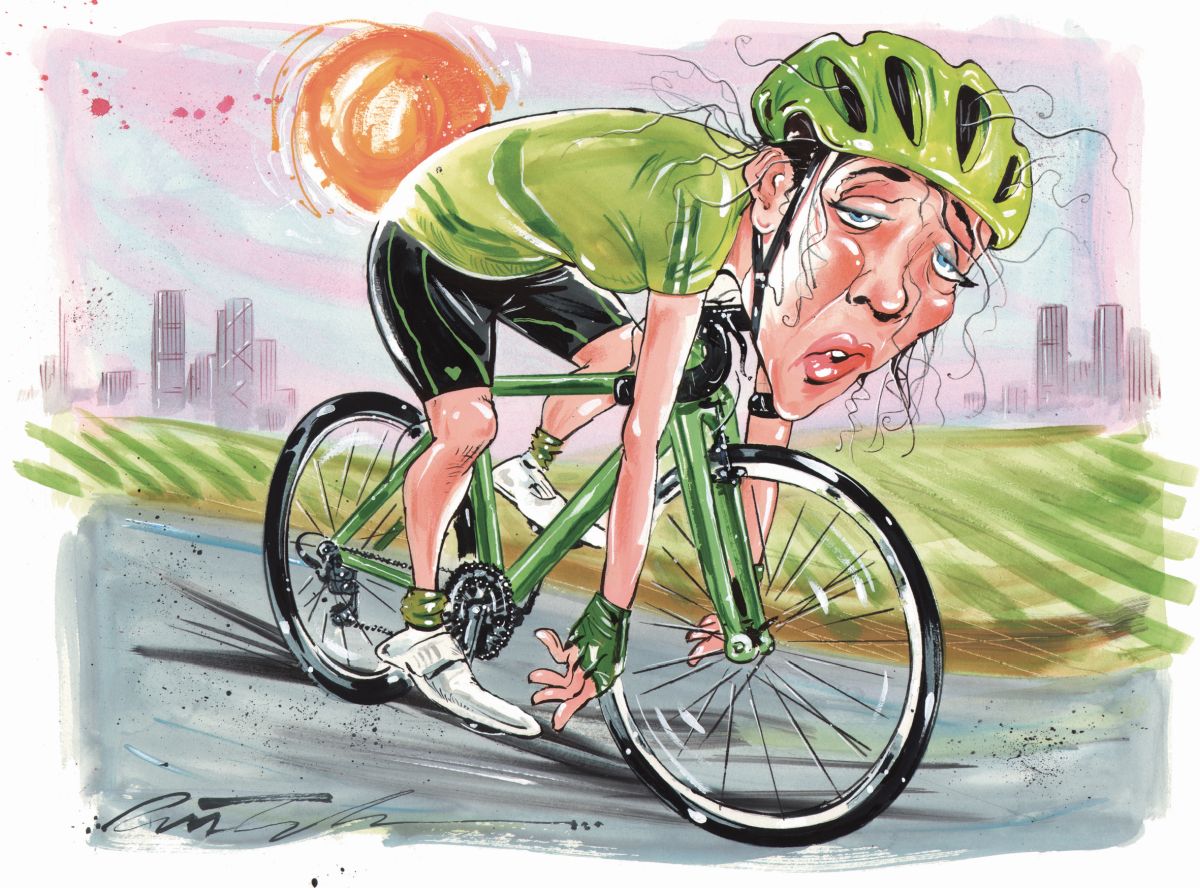Avoiding the bonk
Make sure your body, and your brain, are properly fuelled to avoid bonking

by Cheryl Madliger

“Eat? While we’re biking?” I asked my friend whose back wheel I’d been chasing for the past two hours. I was sure that I must have heard him wrong, but I was feeling a little light-headed. In fact, I was actually ready to stop pedalling and call someone for a lift, as I was unsure if I’d make it the last 10 km home. Ready to start crying, I trusted him as he handed me a chocolate gel.
Nothing had ever tasted so good, and a few minutes later, I found myself able to talk and ride once again. We made it home, albeit slowly. I had been introduced to an all-too-familiar phenomenon that many new cyclists encounter – the bonk. “Our muscles and brain rely on carbohydrate in the form of glucose from the bloodstream or stored glycogen for fuel,” Andrea Docherty, a sports dietitian in London, Ont., said. “When people bonk, they have run out of fuel in the tank, meaning their glycogen stores are empty and their blood sugar is low.”
According to Docherty, the low glycogen and blood sugar explain why I was close to tears and not sure I was going to make it home. “Without fuel for the muscles, a cyclist may begin to feel weak, lethargic and unable to pedal,” she said. “Because the brain no longer has a steady supply of fuel, this can lead to feeling easily irritated, emotional, dizzy and confused. The ride may start to feel incredibly difficult to continue, or you may feel irritable and have difficulty focusing.”
A bonk is hard to bounce back from, so a cyclist’s best bet is to prevent one in the first place. Docherty said that what a cyclist consumes outside of training matters; making sure you fuel yourself properly off the bike will help you feel better during your rides. “Glycogen is like gas in the tank of a car, and you want to have this full before entering a ride,” she said. “What you eat just before a workout won’t impact glycogen stores, but it can help to maintain your blood sugar levels.” Outside of that, Docherty recommends a higher carbohydrate diet to ensure you recover glycogen stores after and between your workouts.
The amount of stored carbohydrate we have, however, is limited. At a certain point, we will need to fuel on the bike. “For rides longer than 60–90 minutes, fuelling with easily digestible carbohydrates will be required to maintain blood sugar levels and prevent glycogen depletion,” Docherty said. Shorter rides of higher intensity might also require refuelling during the session. Sports drinks, which also provide muchneeded hydration, as well as gels, dried fruit and energy chews are all easy options for cyclists. They should be taken early and often, starting at about 15 to 20 minutes into a long ride.
Docherty recommends taking in about 30–60 g of carbohydrate per hour. An energy gel typically provides about 25 g. “The amount will depend on a person’s body size, the amount of muscle mass they have, as well as nutrition and training status,” she said. Besides higher intensity rides, riding at altitude or in the heat can also increase the use of carbohydrates during exercise and increase an individual’s requirements.
Should you find yourself in the throes of a bonk, the best thing to do is just what my friend and saviour that day suggested – take in some quick-acting fuel. “If you feel yourself starting to bonk, you need to get your blood sugar levels up,” Docherty said. “Consume simple sugars that are easily digested and that will quickly enter the bloodstream, such as a sports drink, gels or chews. Consuming solid food, like an energy bar, will take longer for your body to break down and not increase your blood sugar fast enough.”
According to Docherty, bonking is something that many new cyclists experience but does not need to be a part of learning to ride. “Bonking is preventable,” she said. “It’s important to ensure you are properly fuelled before the ride and have a fuelling strategy in place for longer rides.” These days, I rarely leave home without a chocolate energy gel.
